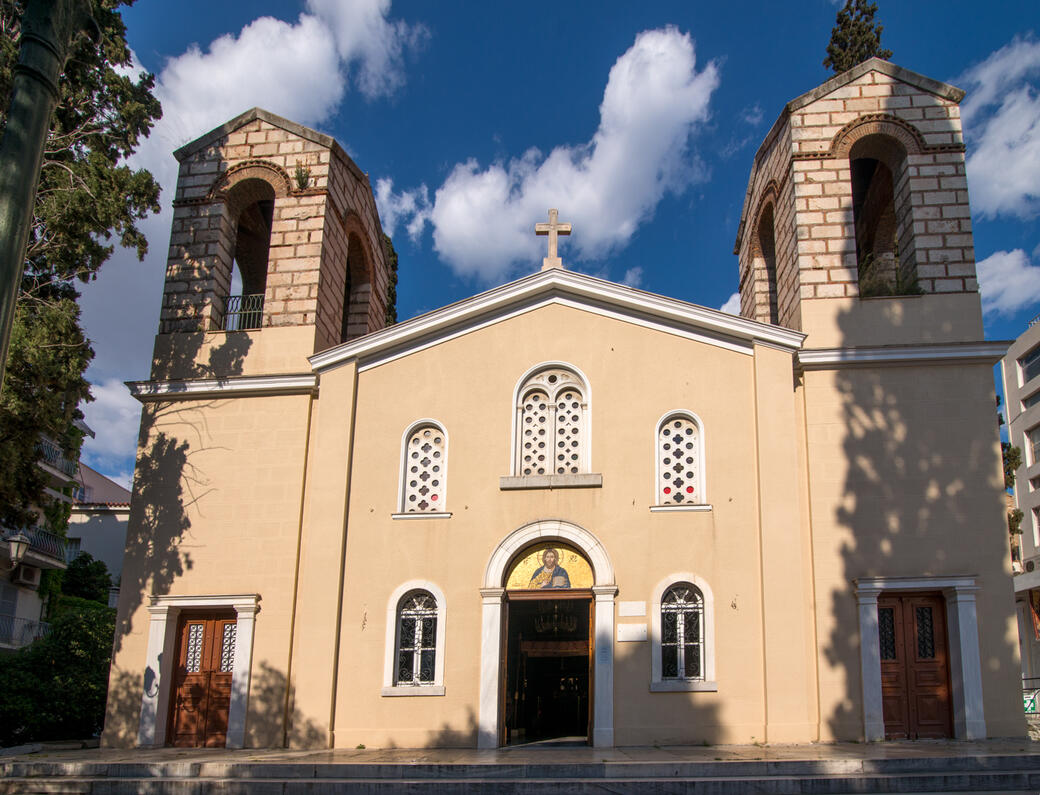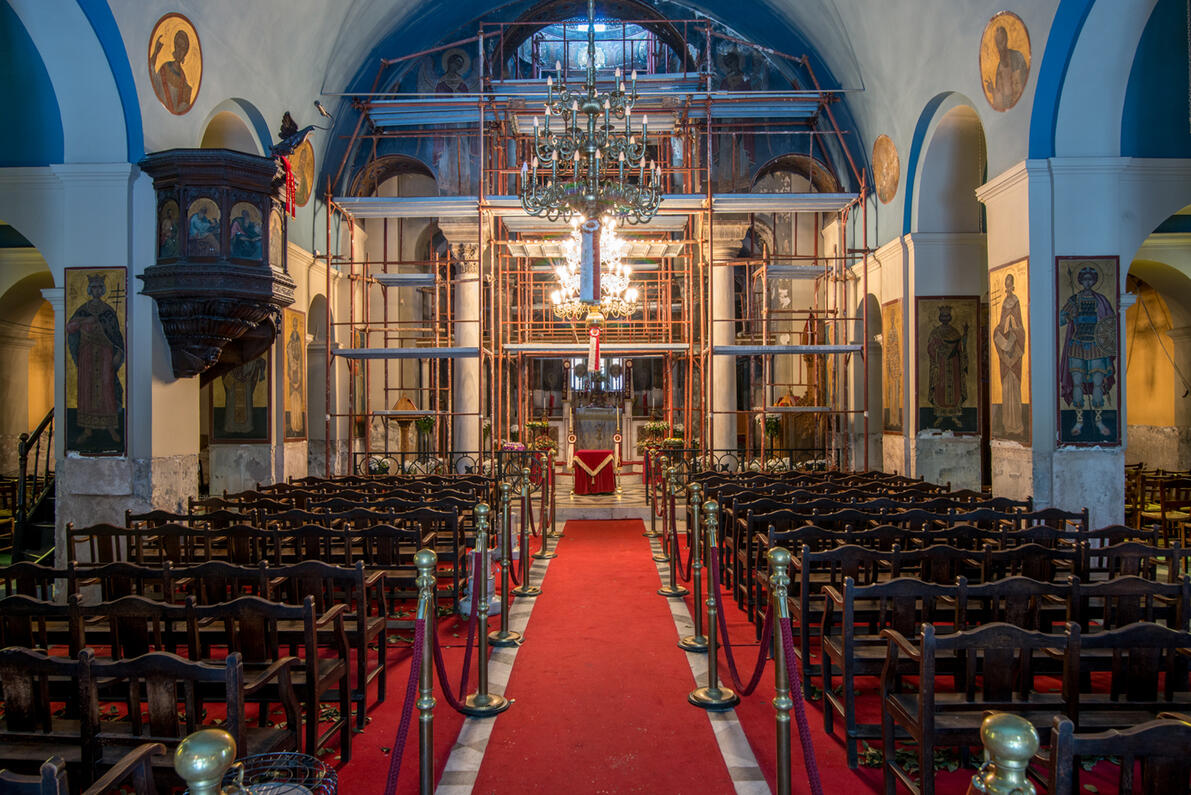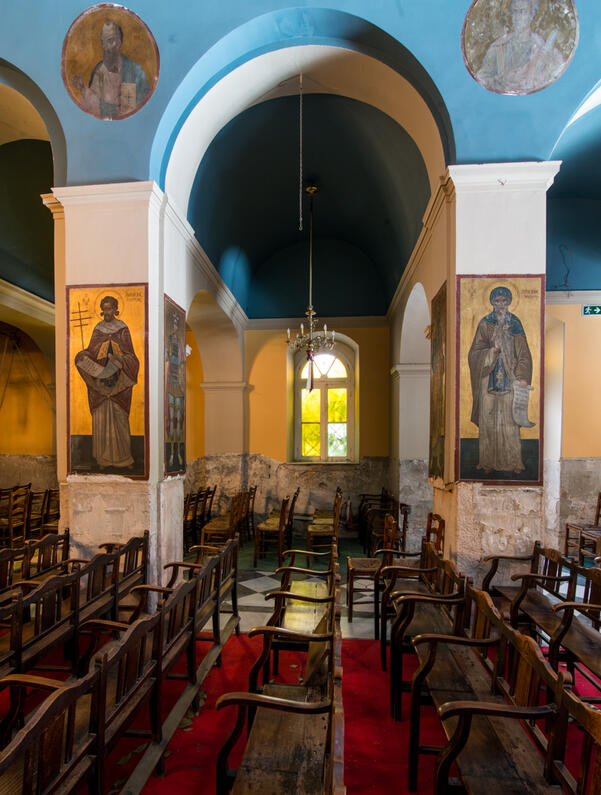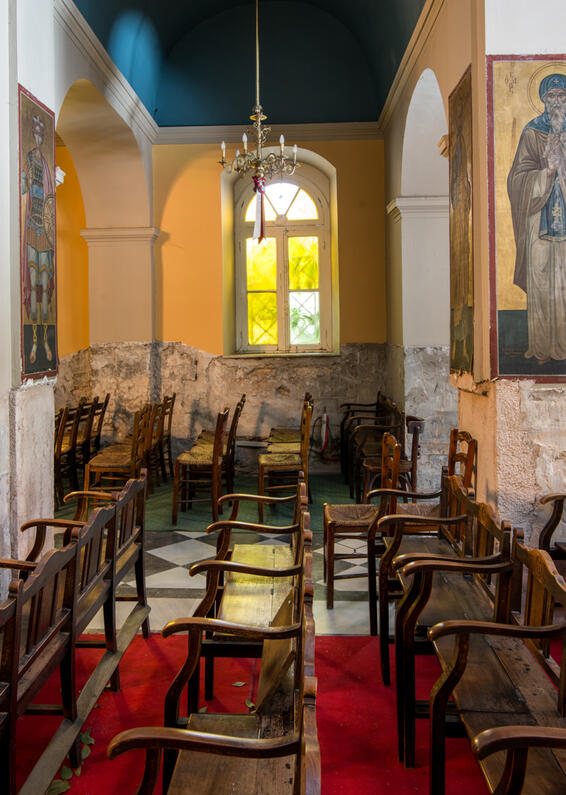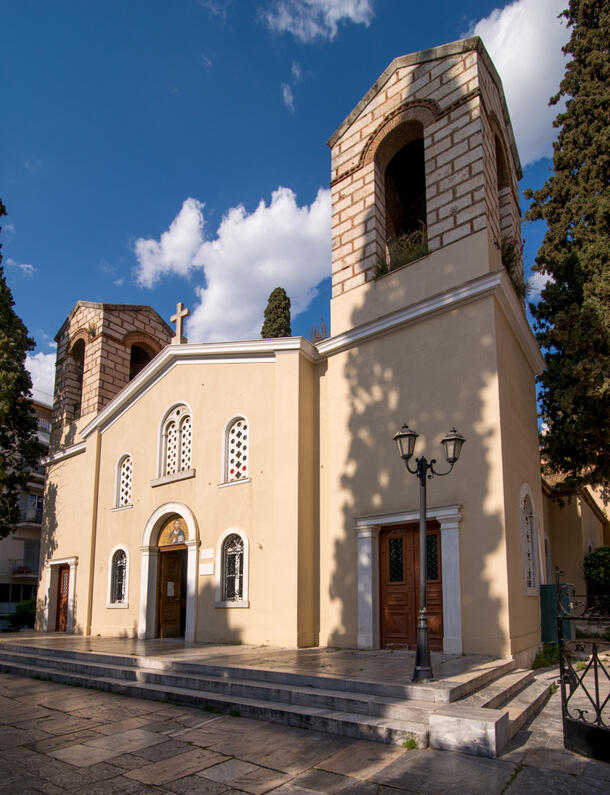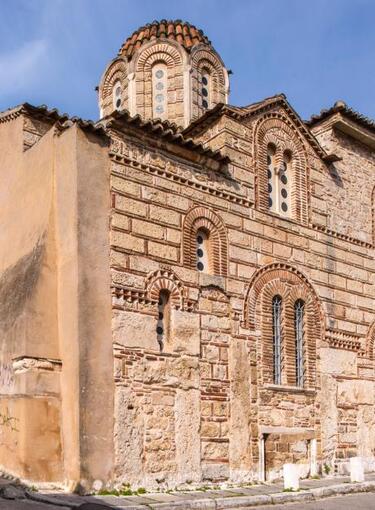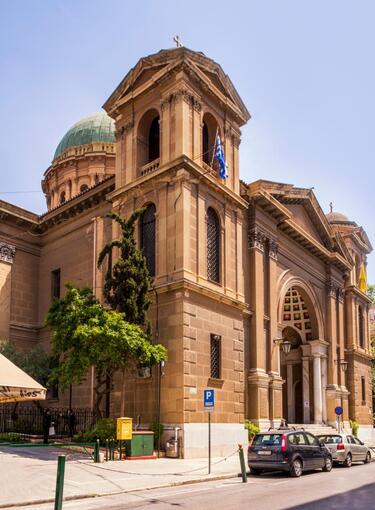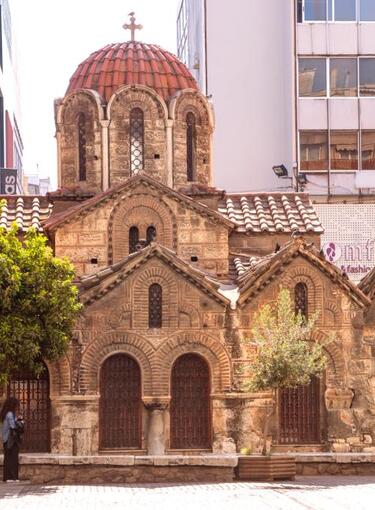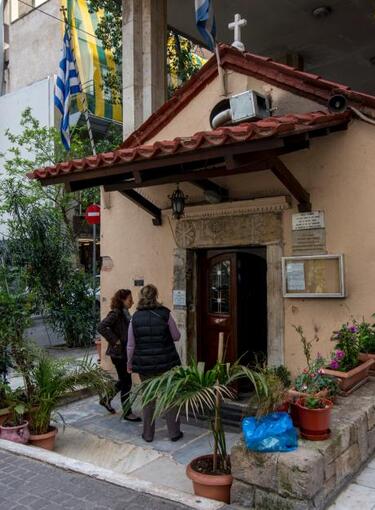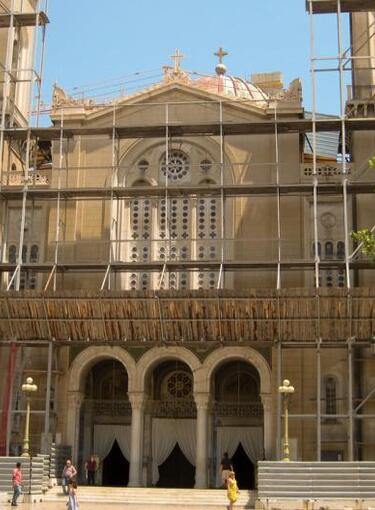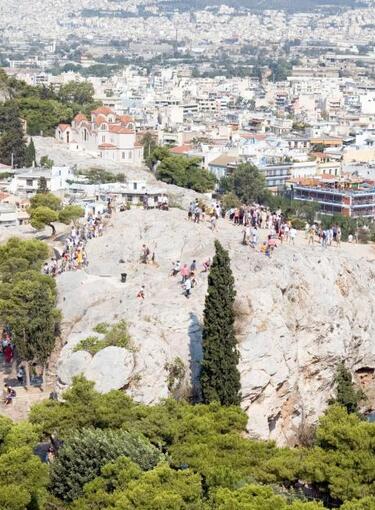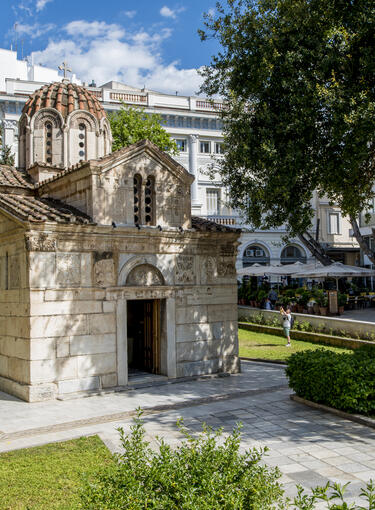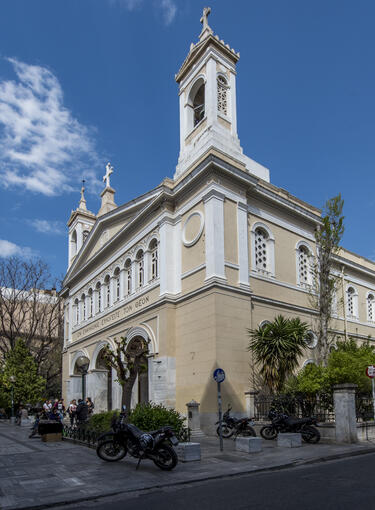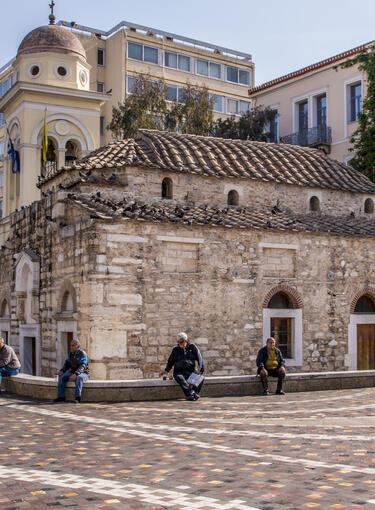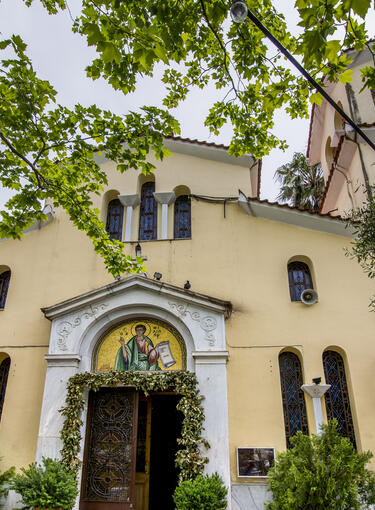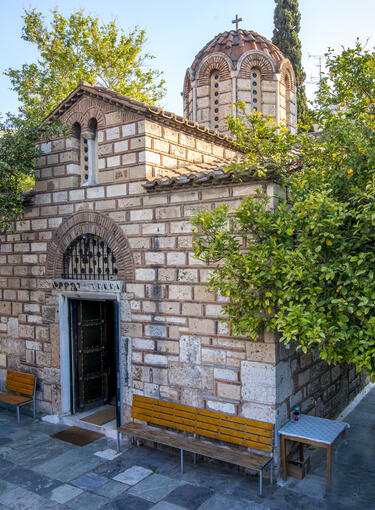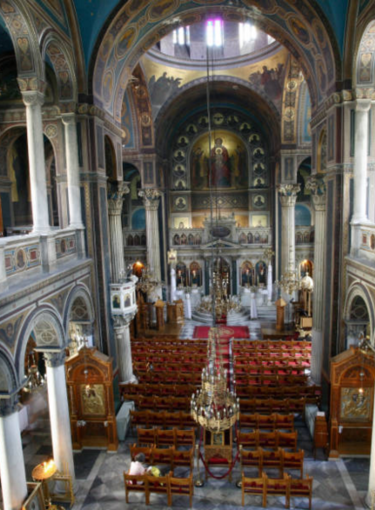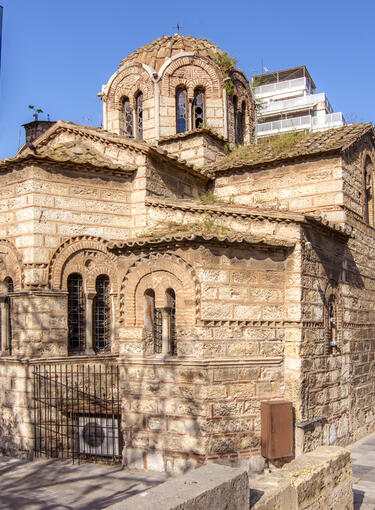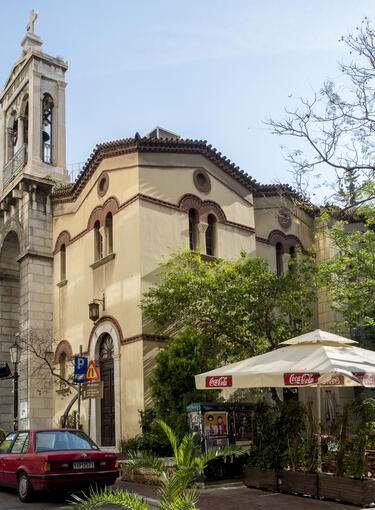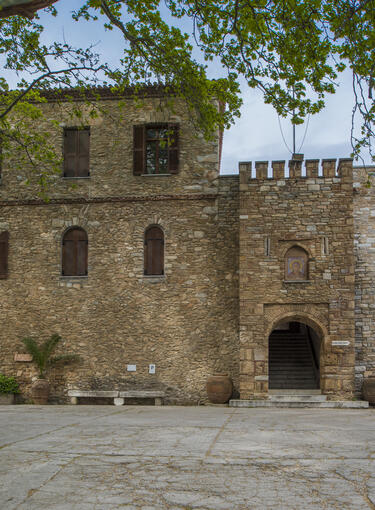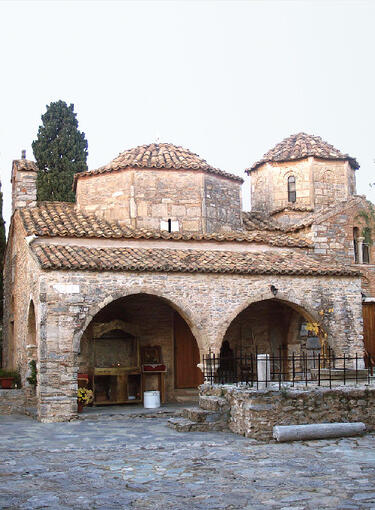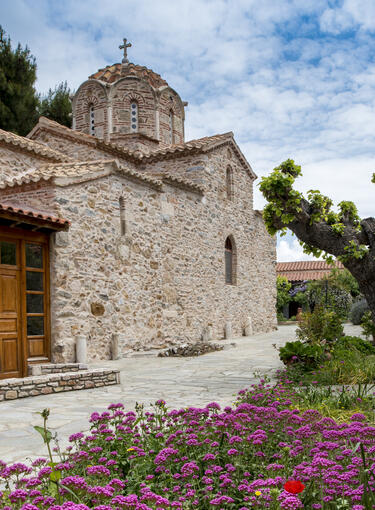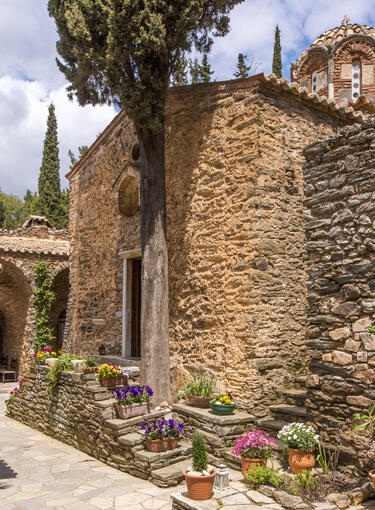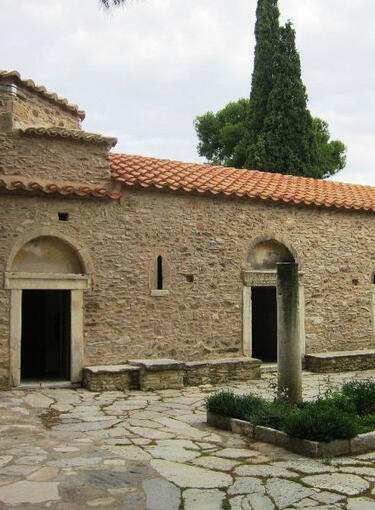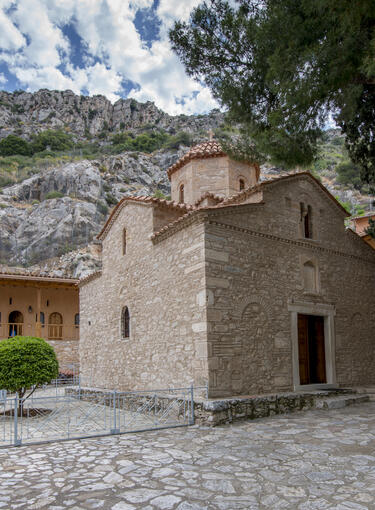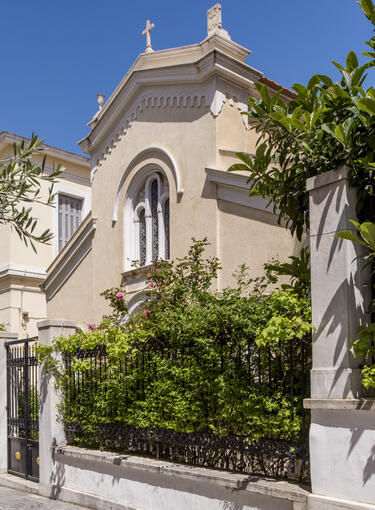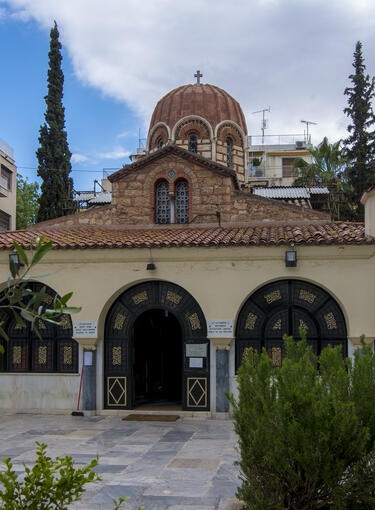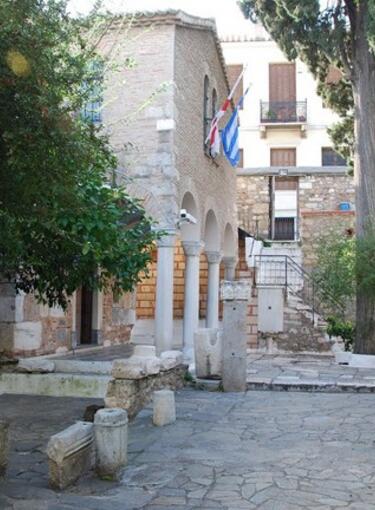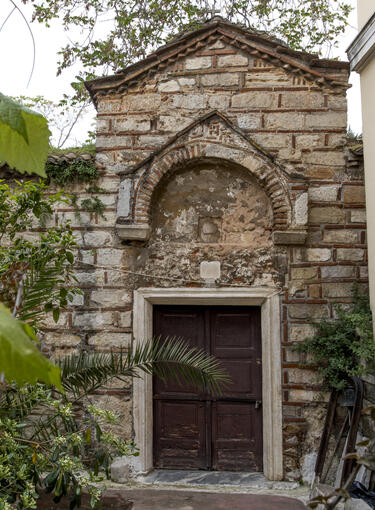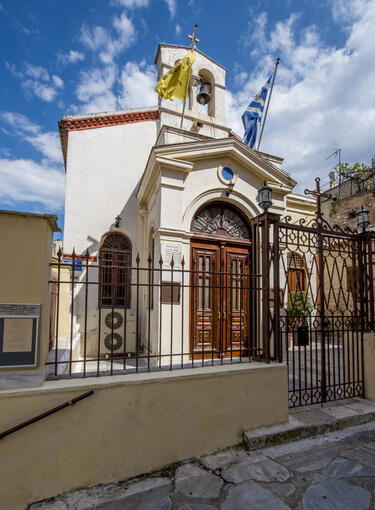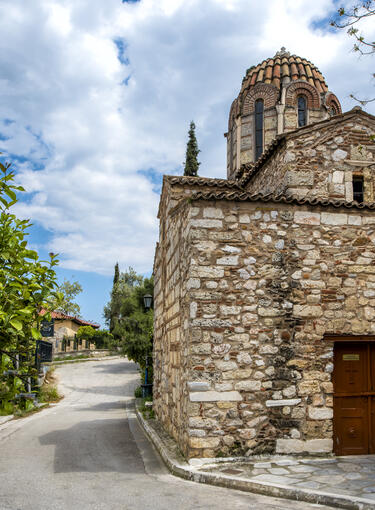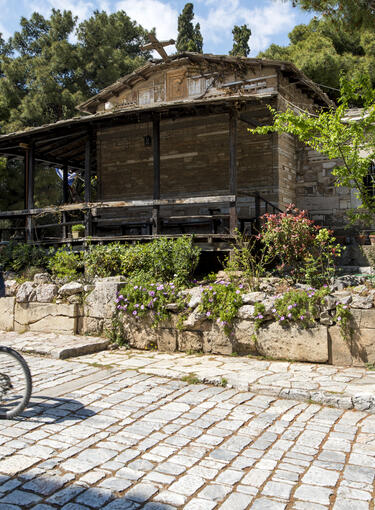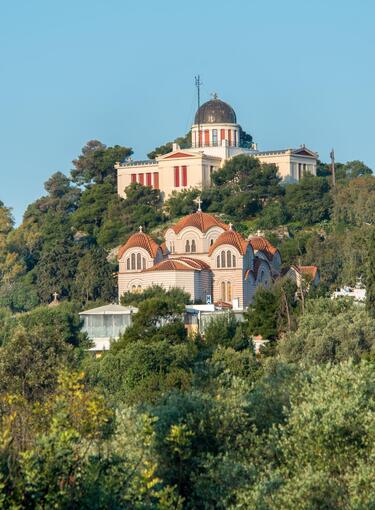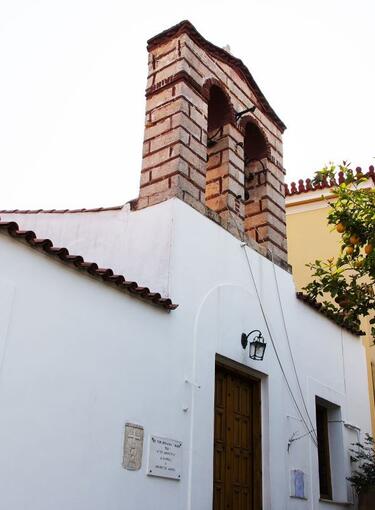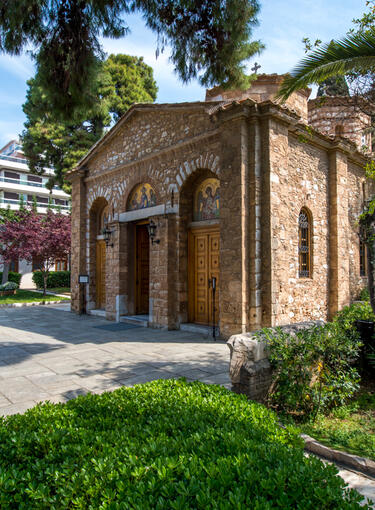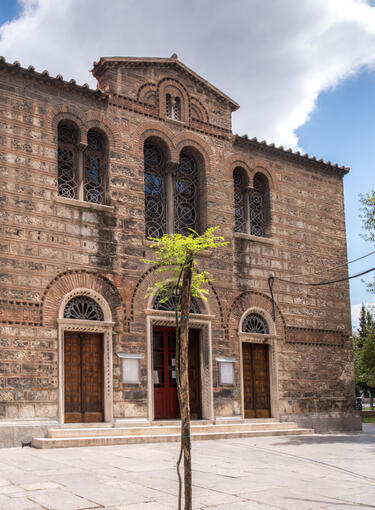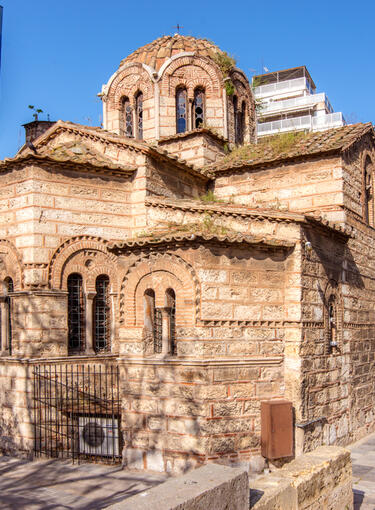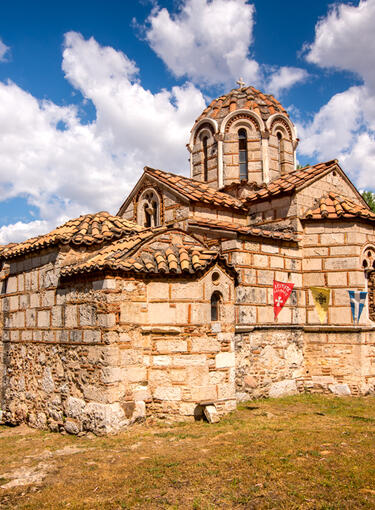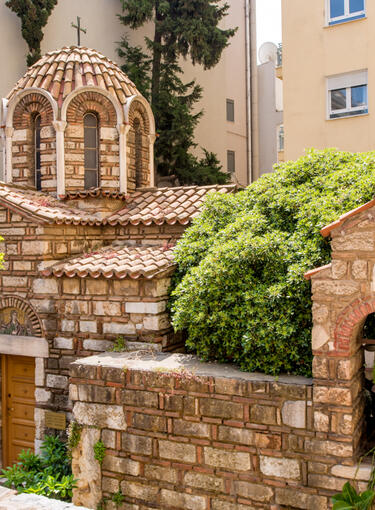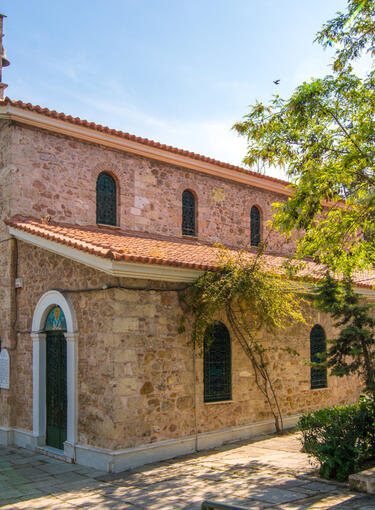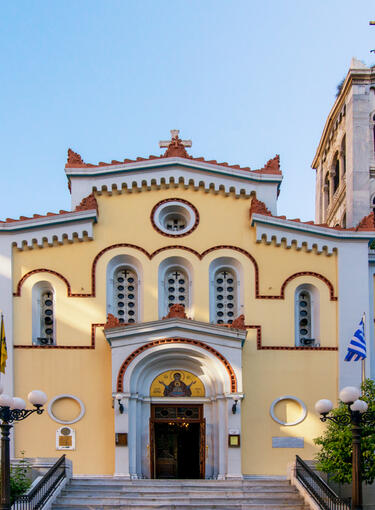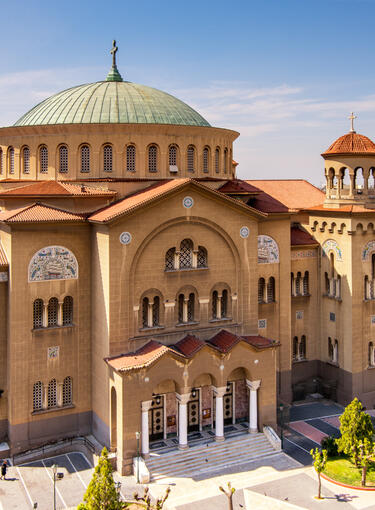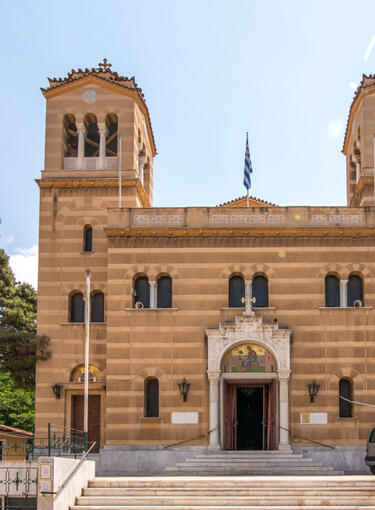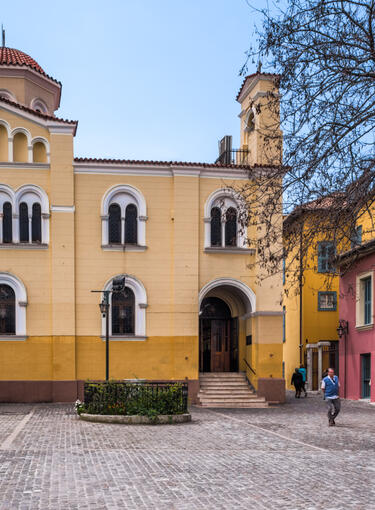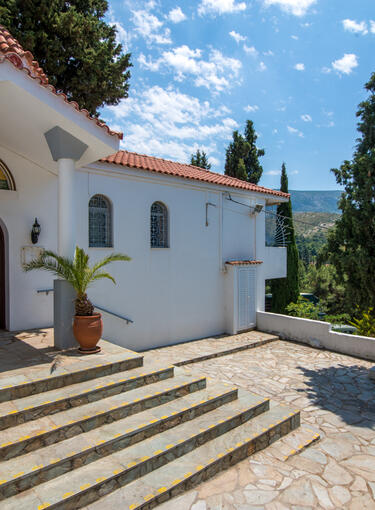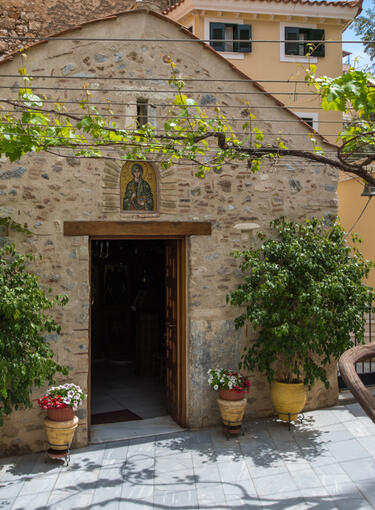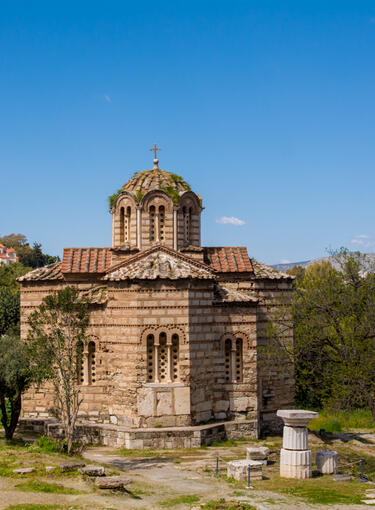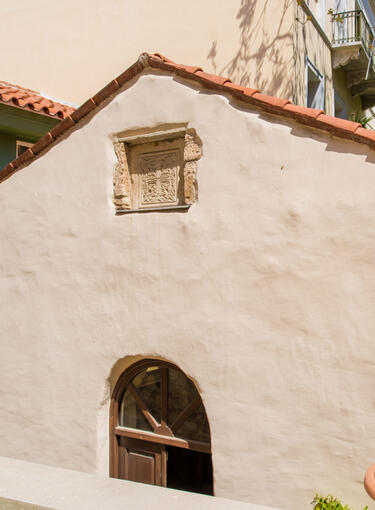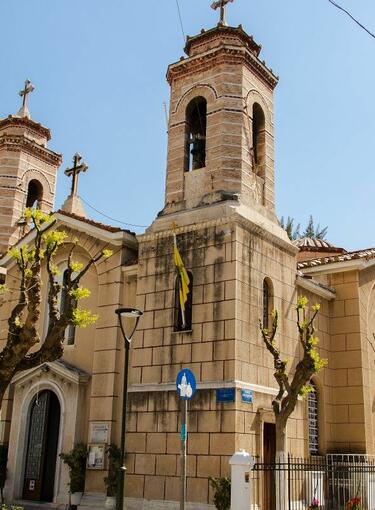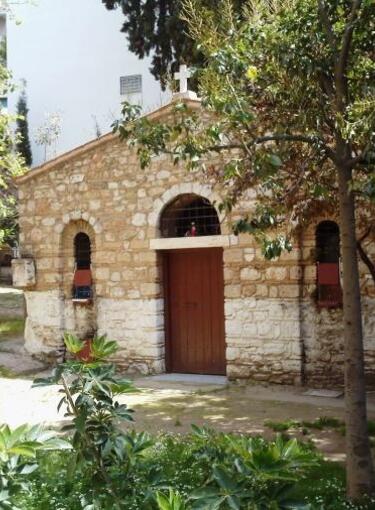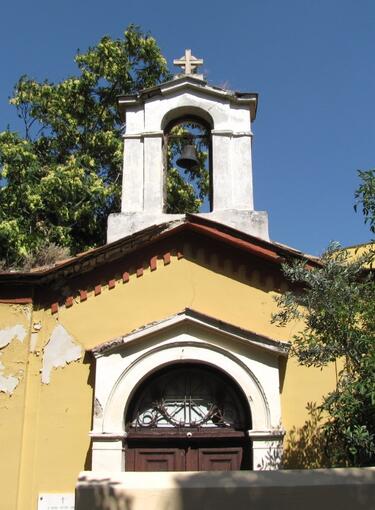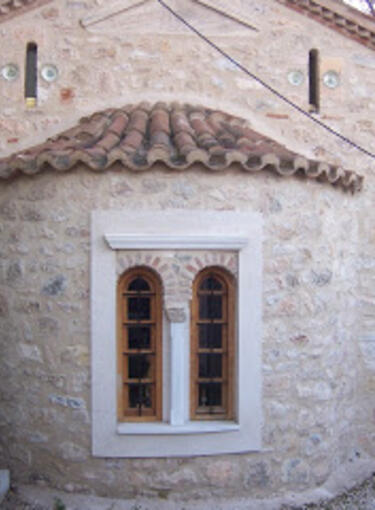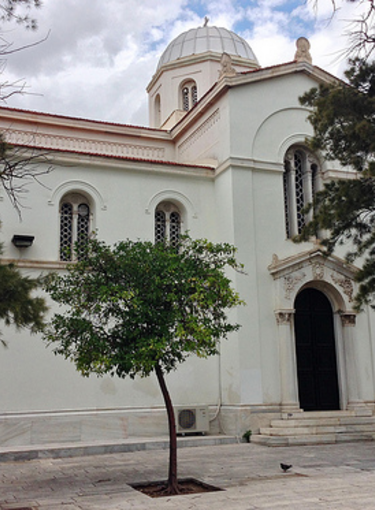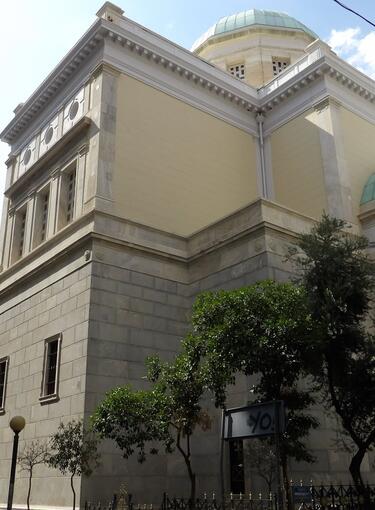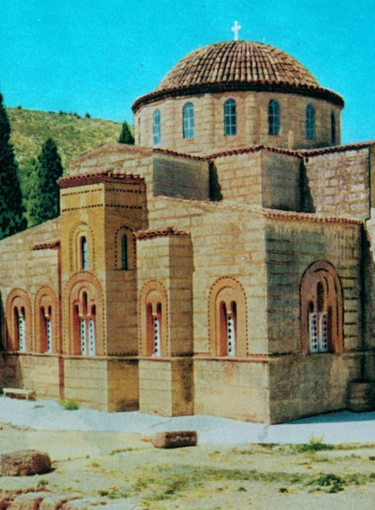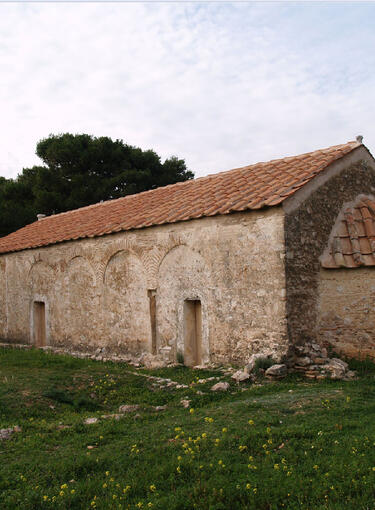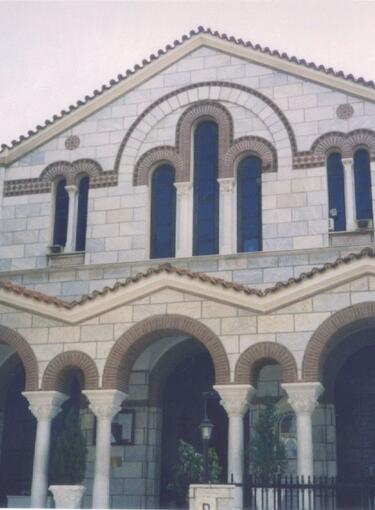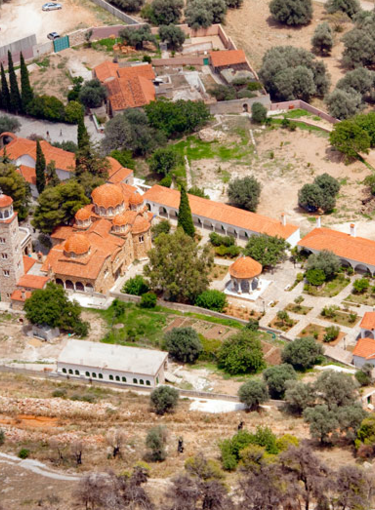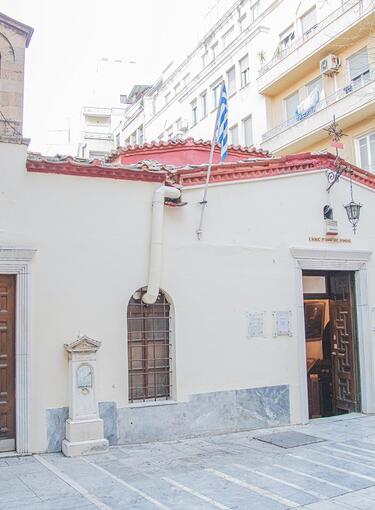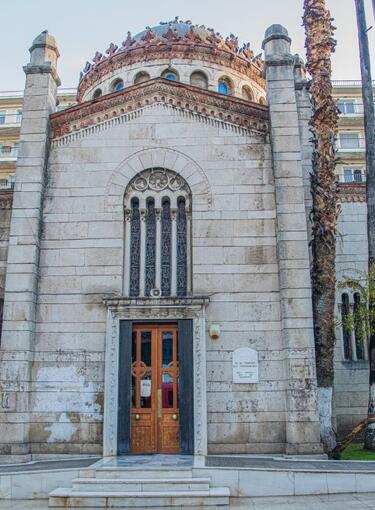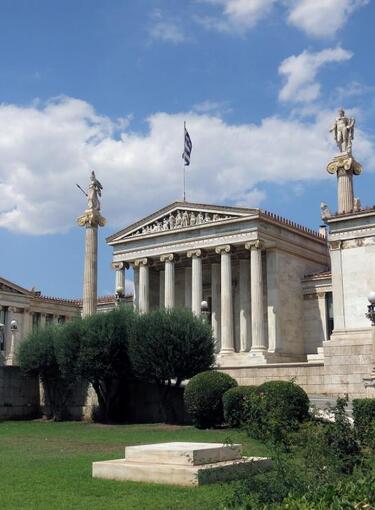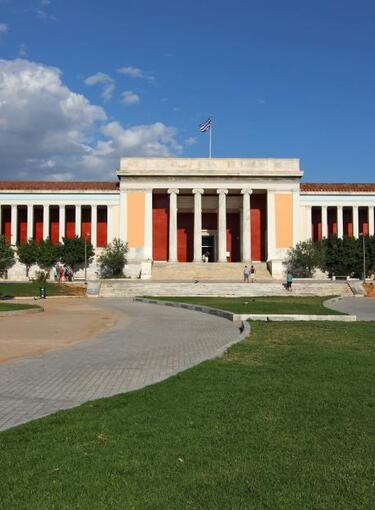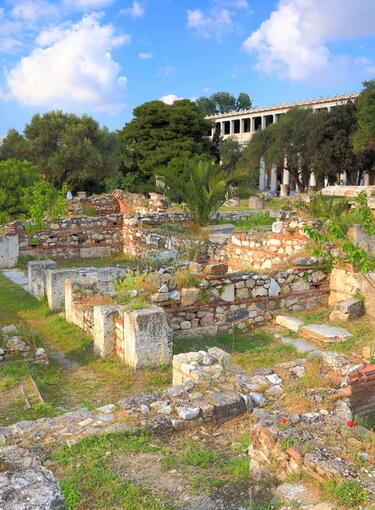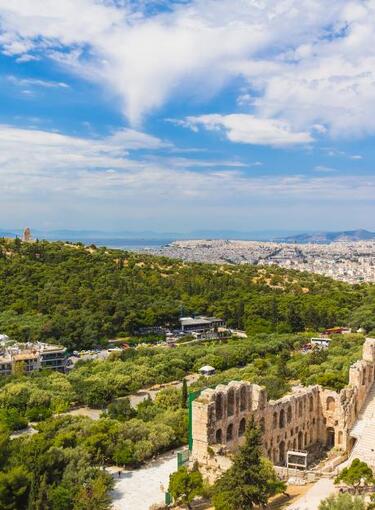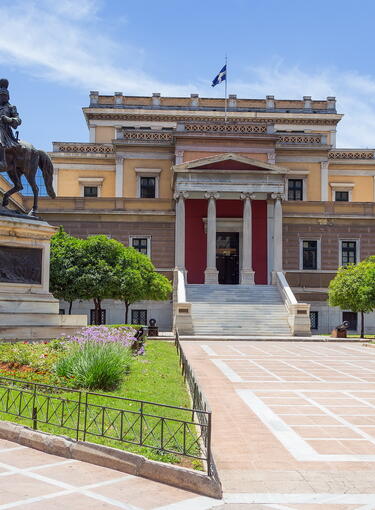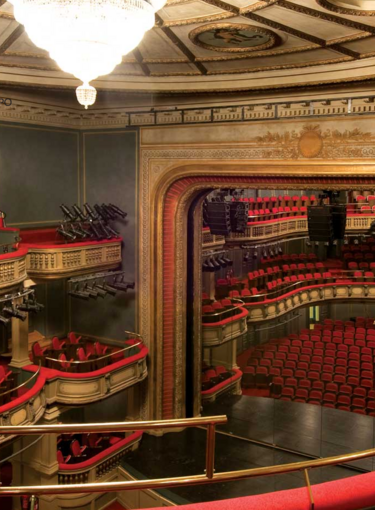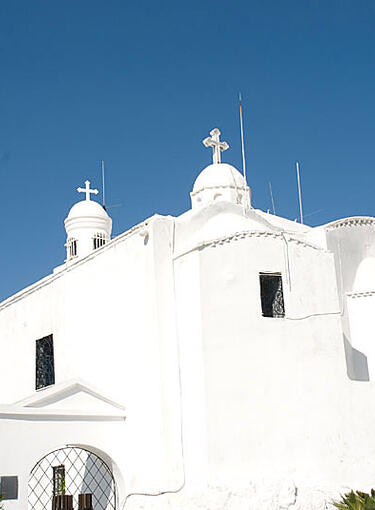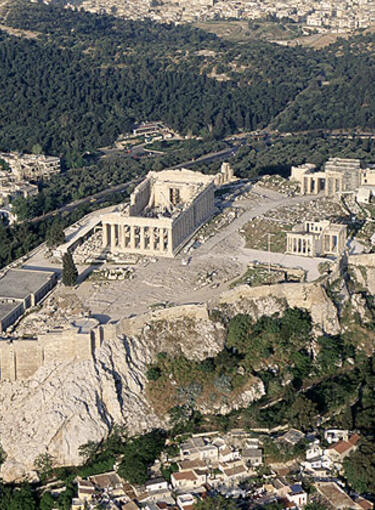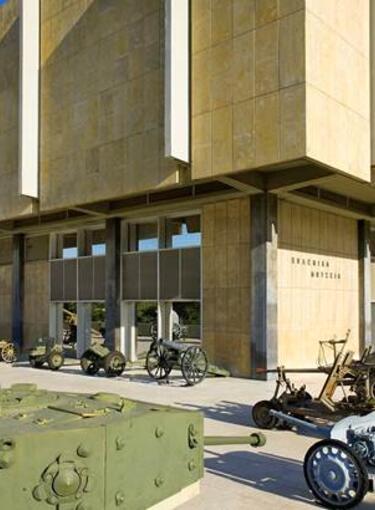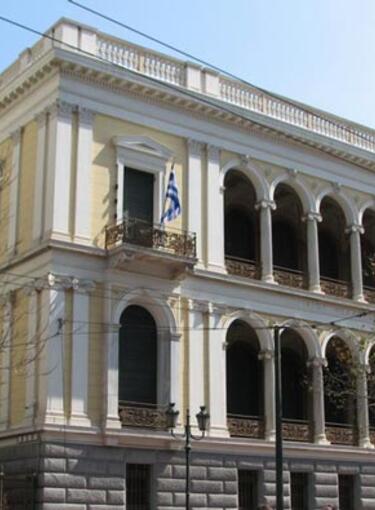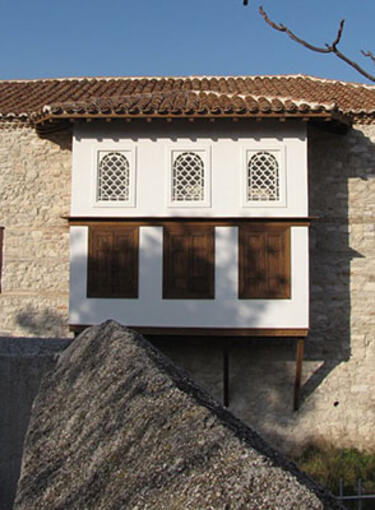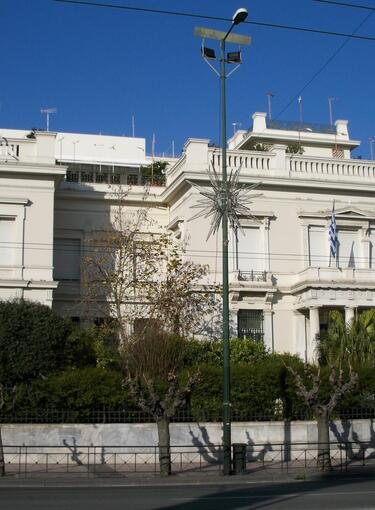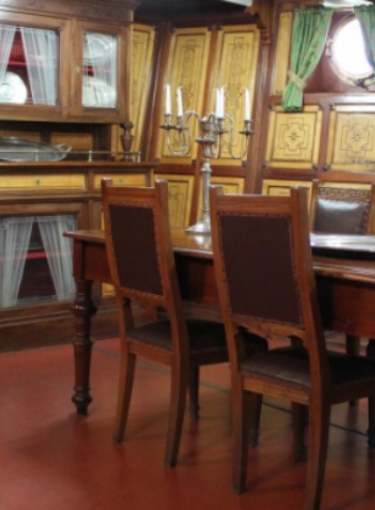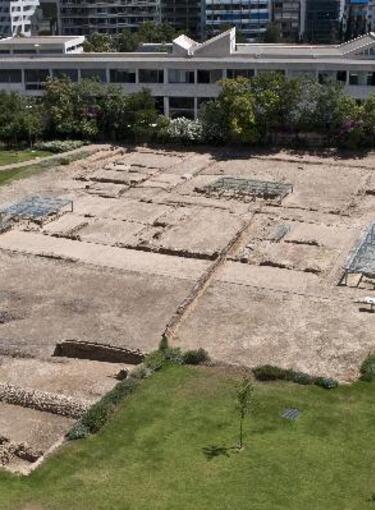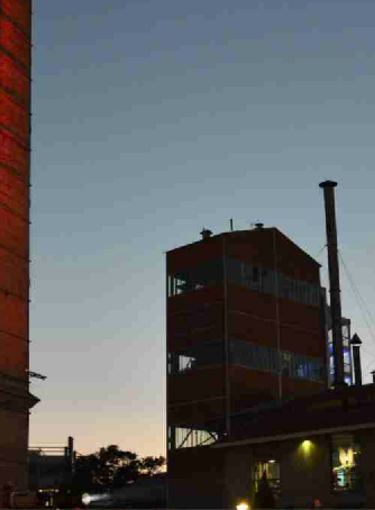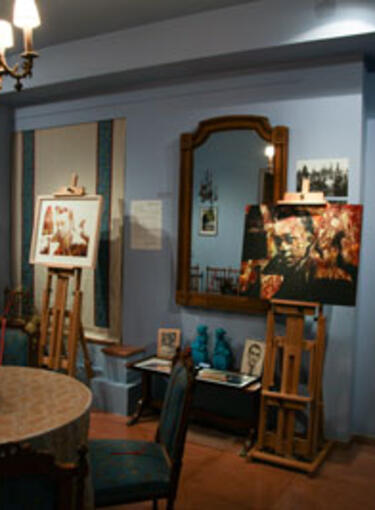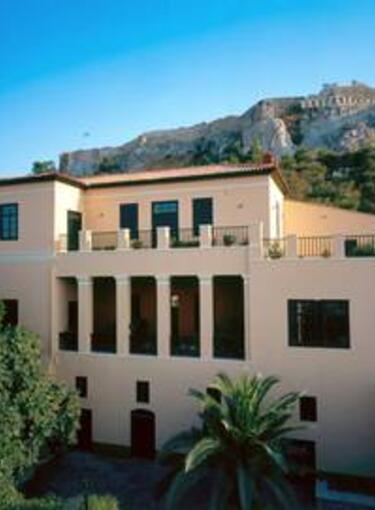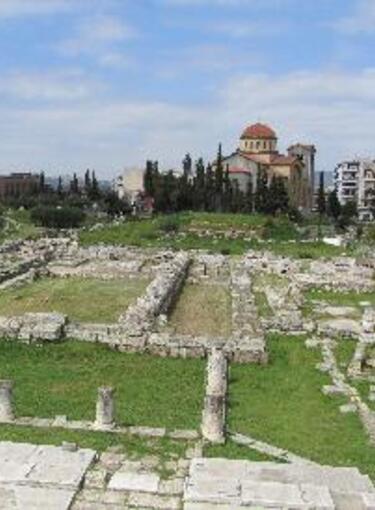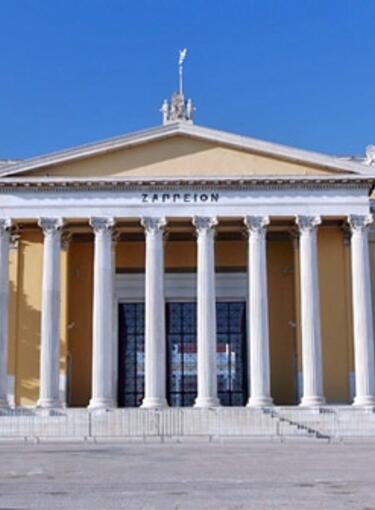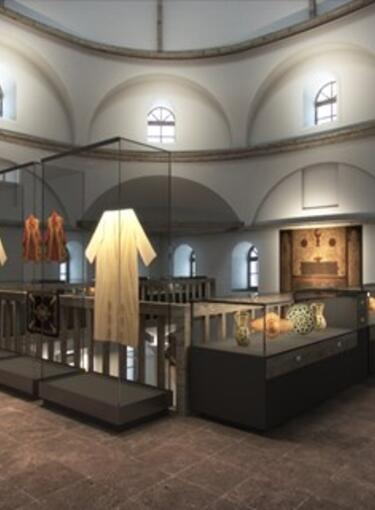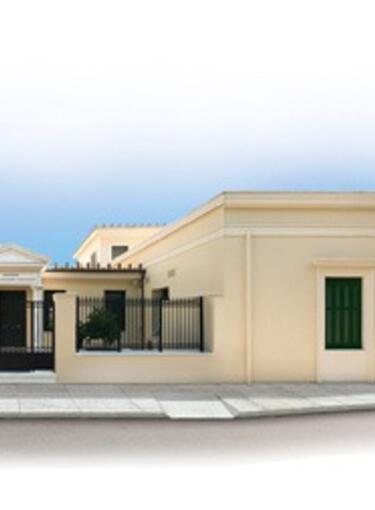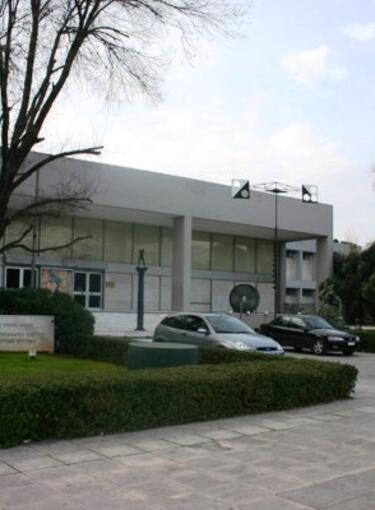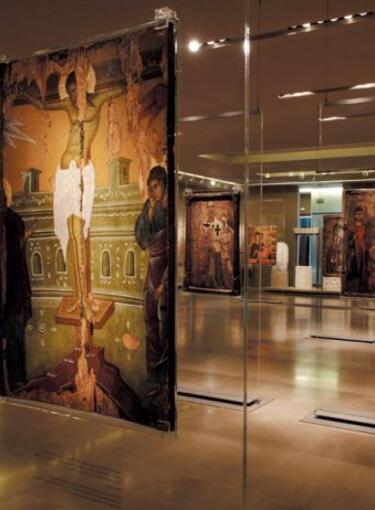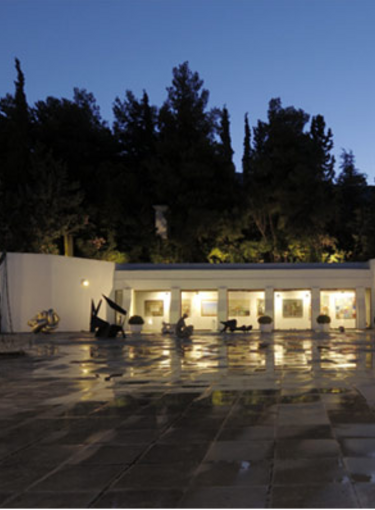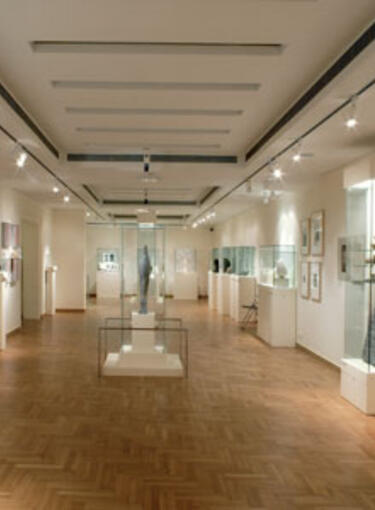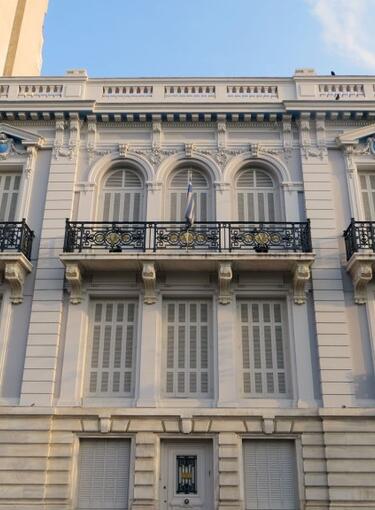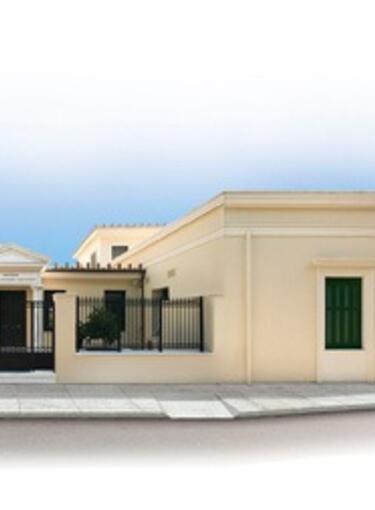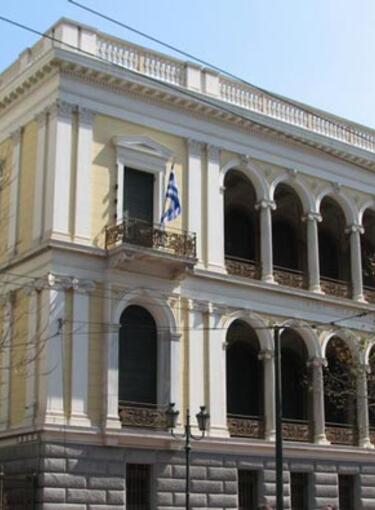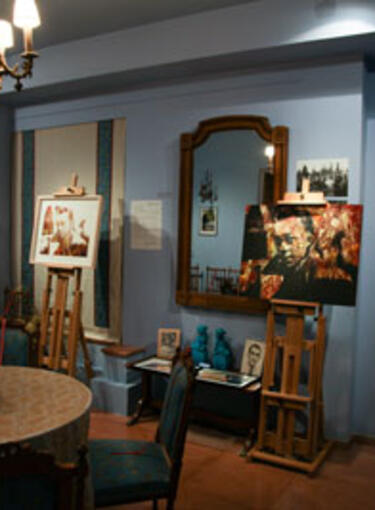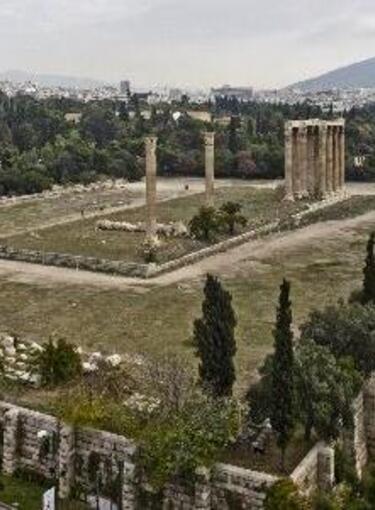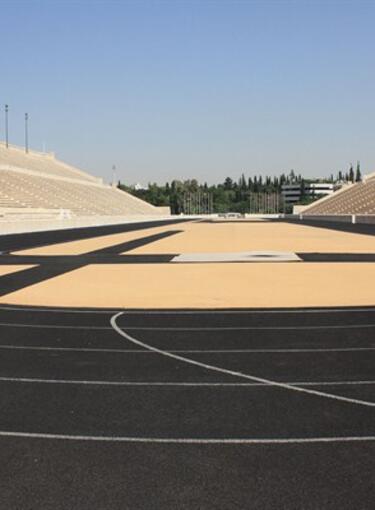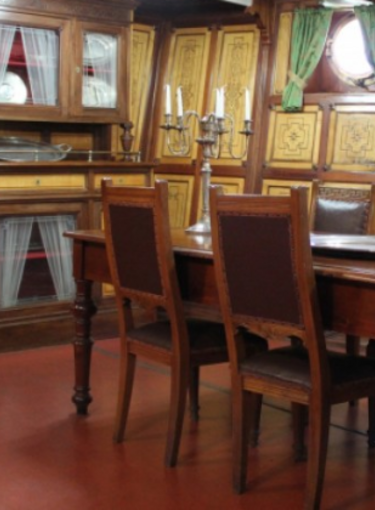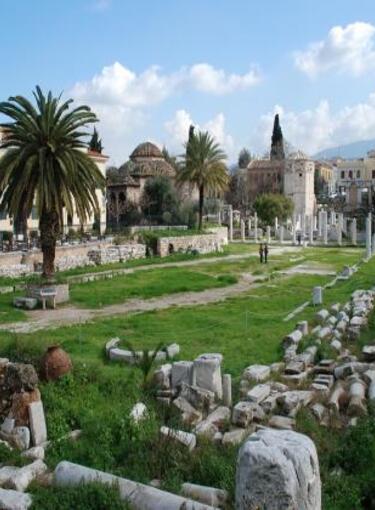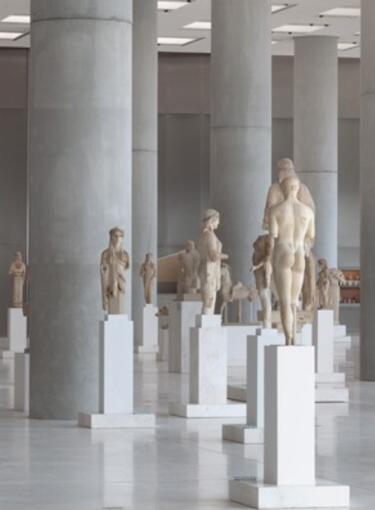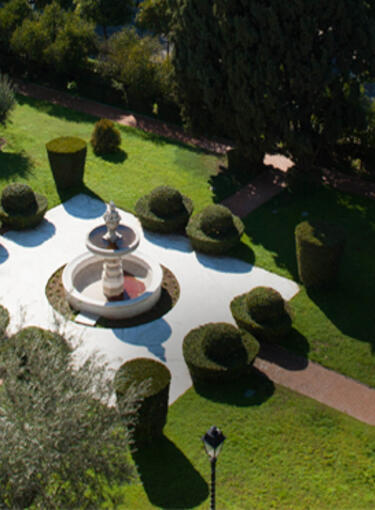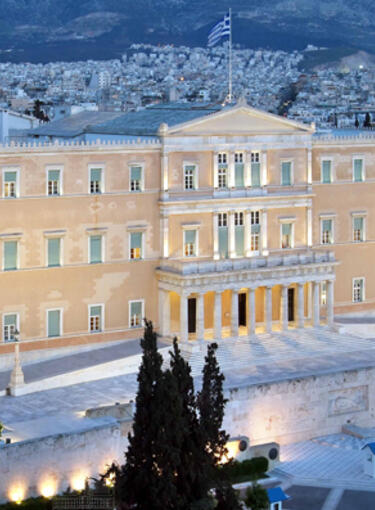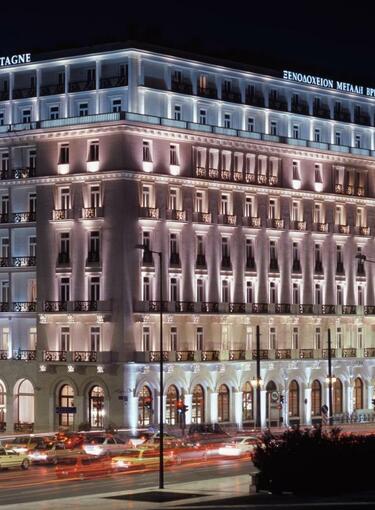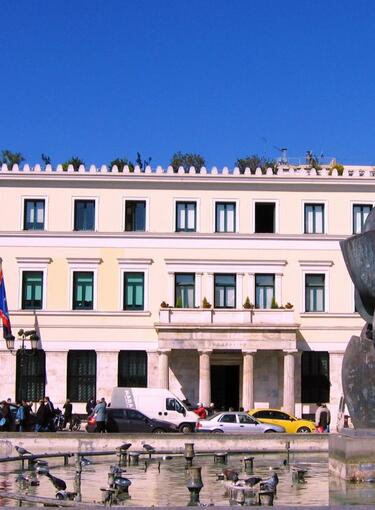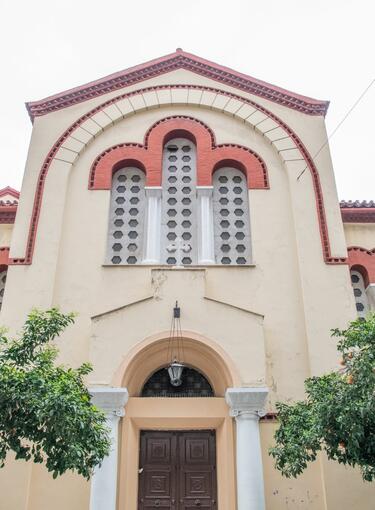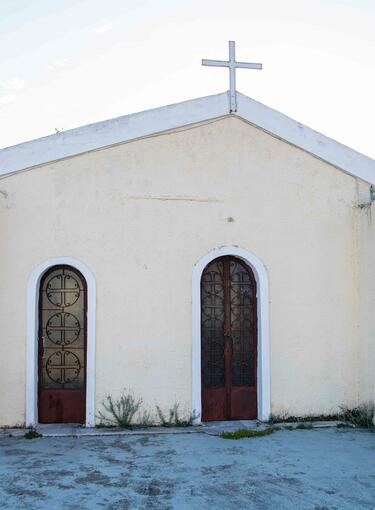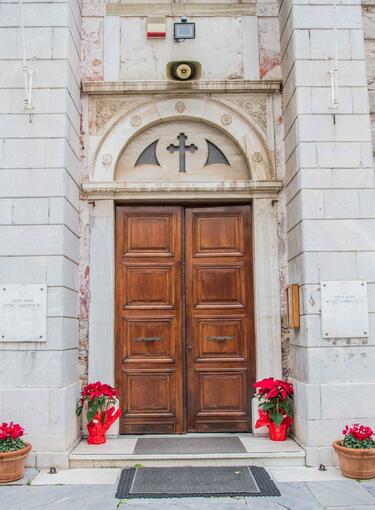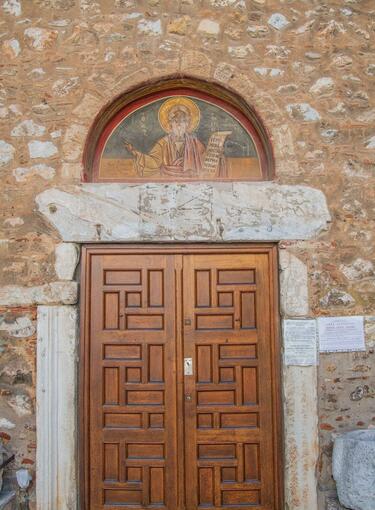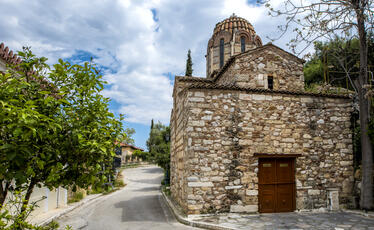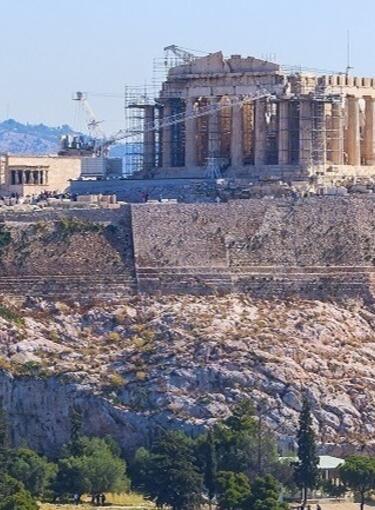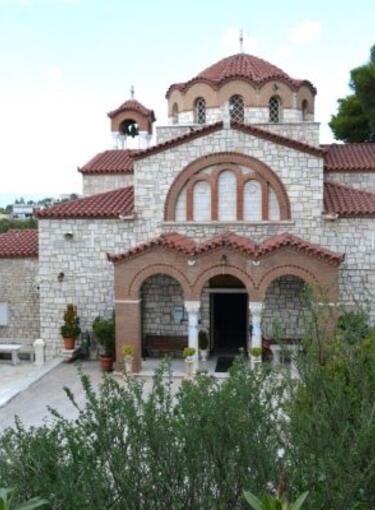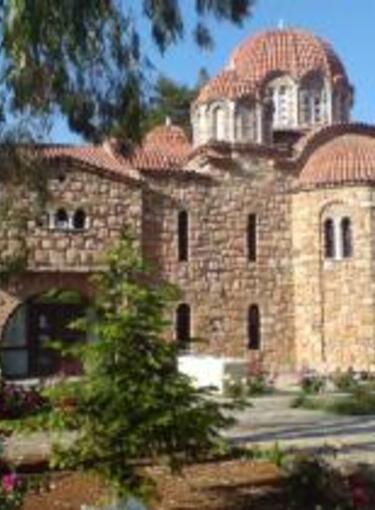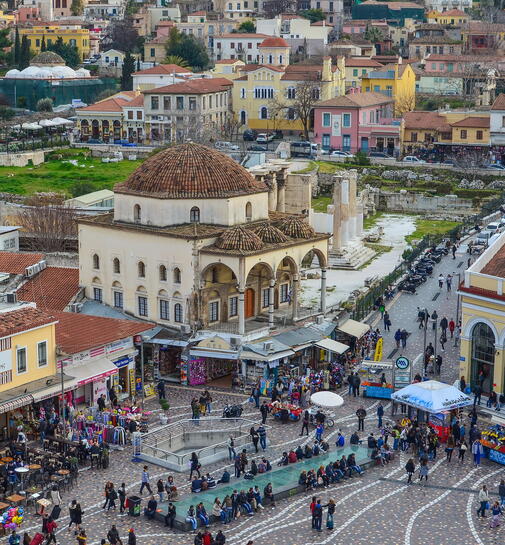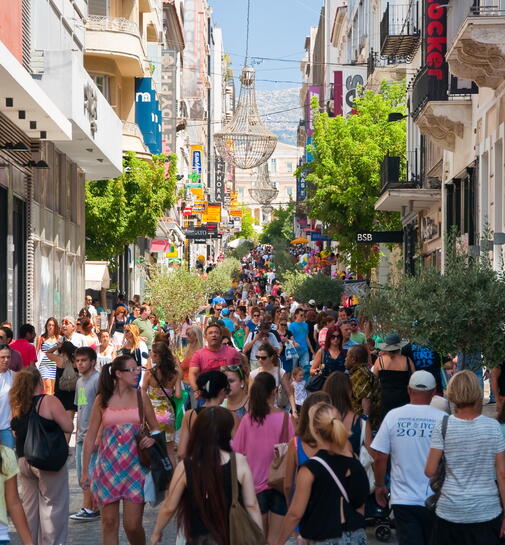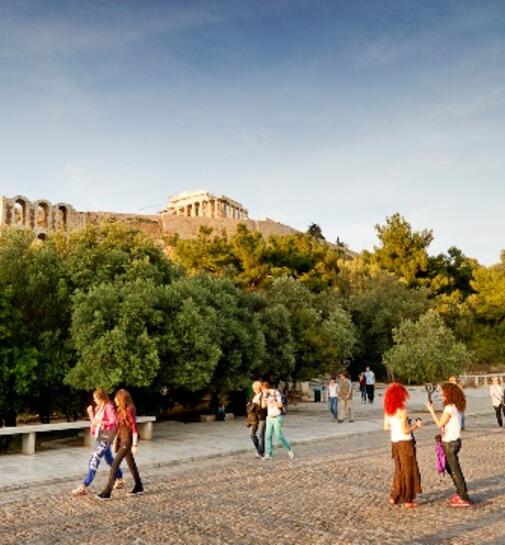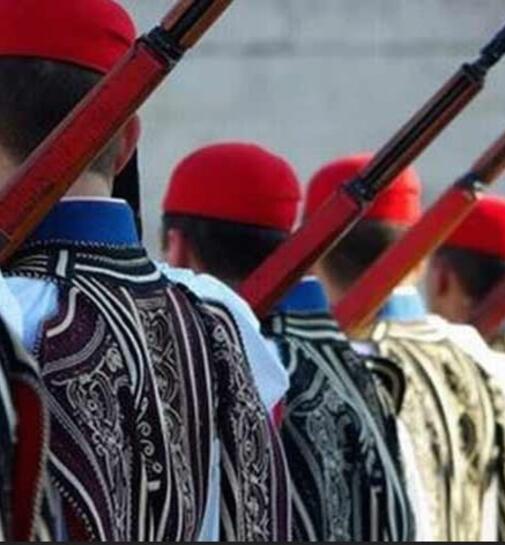Historic Temples
In the beginning of the Kydathinaion street, at the centre of Plaka, is the Byzantine church of the Metamorphosis of Sotera (Transfiguration of Christ), which is known as the church of Sotera Kottakis, a name that is related to its founder.
It was constructed in the beginning of the 11th century and belonged to the type of the cross-in-church, with a dome that is supported by four columns. On its eastern side three semi-circular tall arches are shaped. The initial Byzantine core of the church has been altered today and survives only on the eastern side and at the dome. The first damages were probably made during the Greek Revolution, while large scale unfortunate interventions were made in the period 1847-1855, while the monument has been given to the Russian community of Athens. The Russians, in order to accommodate their needs for worship, expanded the building, adding oblong areas on the northern, southern and western side. Later, in 1908, they added a spacious area on the west and the church took the shape of a three-aisled basilica. The western area was expanded more in the year 1917 and then two bell towers were added.
The church’s masonry, as it survives on the eastern side, is a simple cloisonné one. The dome is of the “Athenian” type, octagonal with marble columns on the corners and lobed windows. At the interior of the church, the surviving wall paintings are post Byzantine ones, from the 18th and the 19th century, and the marble screen is a work that was carried out in the 20th century. At the small garden that was shaped in front of the church survives a marble fountain of the 17th century and scattered ancient architectural members.
The church celebrates on the 6th of August.
Church of the Transfiguration of the Saviour Plaka (Metamorfoseos Sotiros Church Plaka, Soteira Kottaki)
The Metamorfoseos Sotiros Church of Kottaki, a jewel of the now historical spot of the city of Athens, Plaka, looms imposingly at the intersection of Kydathineon and Sotiros Streets, in the district of Alikokko. The aforesaid title is attributable to the name of the Kottakis family, most probably the first owners of the church and it celebrates on the 6th of August, on the feast of the Transfiguration of the Saviour.
Despite that we do not have written sources on the foundation of the church, yet, as arises from the archaeological research, the church is dated in the middle Byzantine Period. In particular, Charalambos Bouras, dated the original church at the end of the 10th century, while Andreas Xyngopoulos placed it between the 11th and the 12th century. Last, Eleftheria Voltyraki, based on archaeological findings which arose in the course of the restoration works, holds the view that the building was completed in the latter half of the 11th century.
Originally, the church was dedicated to the Soteira Panagia (‘Virgin Mary the Saviouress’) and belonged to the type of the complex four-columned inscribed domed cross–in–square church, most probably without a narthex. In the era of the National Revival, it suffered large damage, while, following the establishment of the Greek State, the church was conceded to the Russian embassy with the purpose of covering the ecclesiastical needs of the Russian community of Athens. Thus, during the time period between 1834-1855, the architectural character of the church is starting to change, as the first works are being implemented for its restoration and expansion.
In the first phase, the church was expanded towards its northern and southern side, to be followed by the demolition of the western wall and in turn, barrel–vaulted aisles were added visibly increasing the area of the church. Among others, during the repair works, use was made also of building materials from the wall of the Ottoman Governor of Athens, Hadji Ali Haseki. In this manner, the current form of the church was formulated, namely the triple-naved barrel-vaulted domed basilica. In 1917, new additions to the church took place, with the extension of the portico, to the west, as well as the building of the two bell-towers.
Despite the extensive aforementioned interventions, recognizable still is, to a remarkably large extent, the building phase of the original Byzantine church. It is worth noting that the original church of the 11th century was limited, spatially, up to the ambo of the current church and was built with rectangulated shell–limestones which were surrounded by plinths, placed at the horizontal and vertical joints.
Today, of the original core of the church, survives its eastern face, with the semicircular apses of the Holy Bema emerging almost in excellent condition. The central apse is larger in width from the side apses, while the masonry is especially well-worked. All three apses transverse two double rows of plinths at the level of the windows, while they are adorned laterally with a dentil course. In the two side apses there open single–light windows, while the middle apse is lit via a triple–light window with marble fulcra. The truncated pyramid imposts of the window mullions are dressed with an octafoil rosette.
Another element which has been preserved from the original Byzantine church is the eight-sided dome, of Athenian type, which has been constructed under the cloisonné system and is perforated by eight single–light windows. Of interest is the fact that on the basis of the dome, towards the northern side, as a structural material had been used the torso of a marble statue, which is dated from the Roman era. The dome is based on four columns out of which the two which are located at the eastern side are dated from the Roman era, while conversely the two western columns were replaced in 1950, with new ones, for static mainly reasons. Parts of the original columns lie on the courtyard, at the west of the church. For the crowning of the columns old marble members have been used, such as three Corinthian-style capitals and an inverted base of Attic style with a plinth at the southwest column.
Taking into consideration an inscription found at the southwest side of the circular base line of the dome, during repair works, the conclusion is inferred that interventions were implemented to the original church also during the year 1930, when it was also wall painted. The murals decorating the church are works of the artist and Byzantine church painter D. Pelekasis, while the enthroned Virgin Mary Platytera [‘wider than the Heavens’] of the Holy Bema is dated from 1870. In February 2009, the church was included under a conservation and restoration programme, during which there was revealed also the unique, until this day, part from the original mural painting of the church. This is a jewelled cross, within a banded frame, of red and black colour, which is chronologically dated in the 11th century.
In its present form, the church is triune, with the left nave being dedicated to Saint Dimitrios and the right to Saint George, in which survives only half of a marble carved panel of the old templon. This historical church has been linked to significant figures, such as Saint Nikolaos Planas, whose ordainment took place there, while in the Soteira Kottaki Church served as deacon also Archbishop Damaskinos (deceased 1949), one of the most eminent ecclesiastical personalities of modern Greece.
Informations
Additional
Date:
early 11th century
Season:
Byzantine
Celebrates:
6 August
Holy Metropolis:
Archdiocese of Athens
Under the Supervision of:
Ephorate of Antiquities Athens
Address:
Kydathinaion, Plaka
Access:
Syntagma Metro Station


